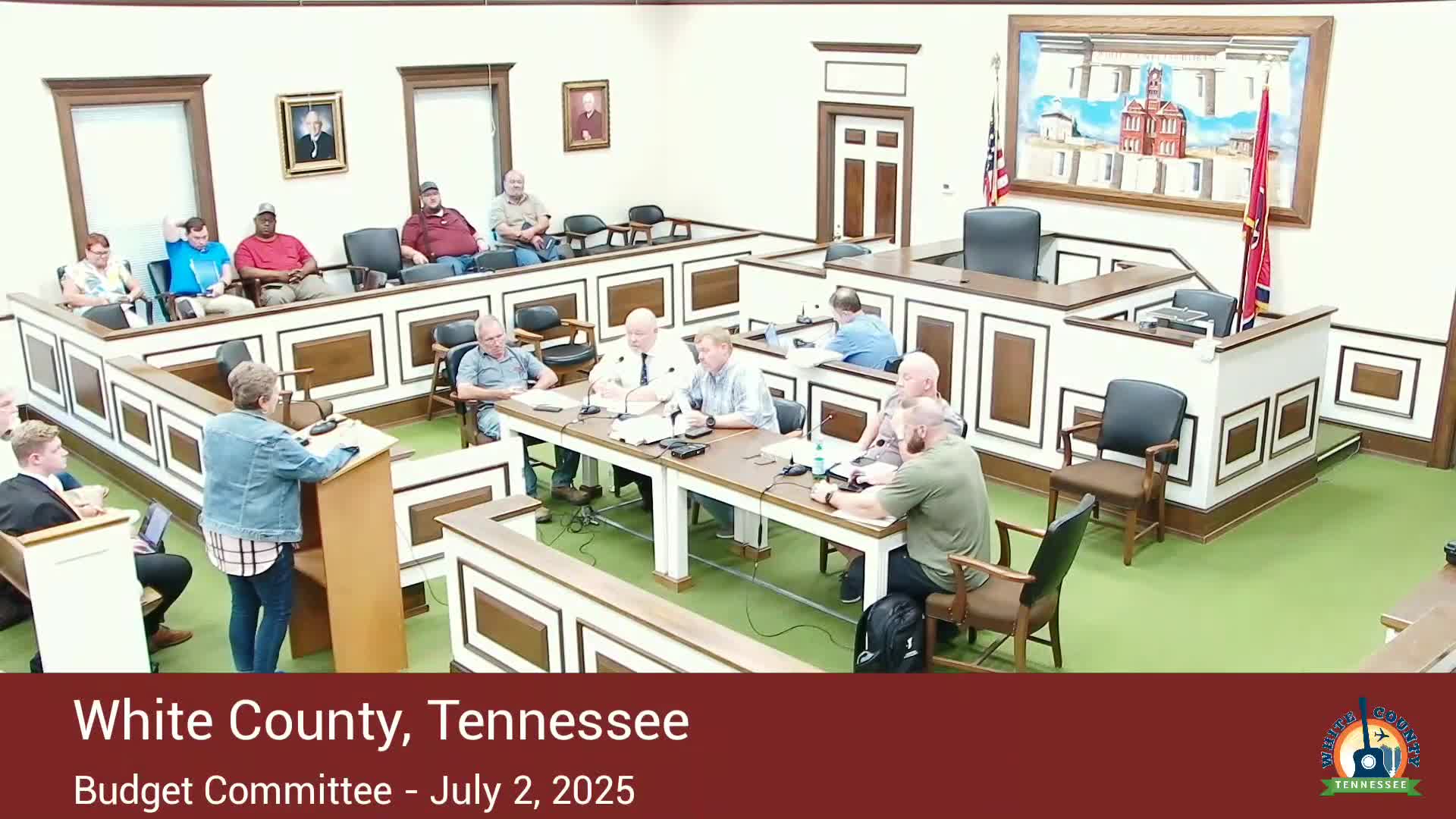County Commission reviews pay structure and budget implications amid growing demands
July 03, 2025 | White County, Tennessee
This article was created by AI summarizing key points discussed. AI makes mistakes, so for full details and context, please refer to the video of the full meeting. Please report any errors so we can fix them. Report an error »

In the heart of White County, Tennessee, the County Commission meeting on July 3, 2025, unfolded under the fluorescent lights of the local government building, where discussions about budget allocations and employee salaries took center stage. The atmosphere was charged with urgency as commissioners and community members voiced their concerns over the county's financial future and the need for strategic planning.
A significant point of contention arose regarding the proposed longevity pay for county employees. One commissioner raised concerns about the potential for escalating costs, suggesting that a cap on longevity pay might be necessary to prevent financial strain. “If you’re going to have that, I think you should consider a cap somewhere,” he advised, emphasizing the importance of prudent fiscal management as the county looks to the future.
The conversation quickly shifted to the Parks and Recreation budget, where it was noted that two pennies from each year’s budget are earmarked for this department, amounting to approximately $194,000. This funding, while essential for maintaining parks and recreational activities, sparked debate about whether it should be redirected to address pressing salary needs for emergency services and law enforcement, which are reportedly struggling to retain staff due to competitive pay in neighboring counties.
Peter Tanish, a resident, expressed frustration over the county's handling of salary increases, pointing out that while the county has seen a rise in property values and tax revenue, the raises for employees seemed arbitrary and disconnected from performance. “You’re wasting too much time... you don’t need to be there,” he remarked, suggesting a more structured approach to salary distribution based on performance metrics rather than blanket increases.
The discussion also highlighted the challenges faced by emergency services, with calls for immediate action to raise salaries for EMS and law enforcement personnel. One commissioner noted that these departments are losing staff to neighboring counties, stressing the need for competitive wages to ensure public safety as the county continues to grow. “We had 800 new houses come in the last four years... we need more police and EMA guys to handle those calls,” he warned, underscoring the urgency of the situation.
As the meeting progressed, the tension between maintaining fiscal responsibility and addressing employee needs became increasingly evident. Commissioners grappled with the implications of their decisions, knowing that the choices made today would resonate throughout the county for years to come. The meeting concluded with a sense of unresolved tension, as the commissioners prepared to face the daunting task of balancing the budget while ensuring the safety and well-being of White County residents.
With the county's growth and evolving needs, the path forward remains uncertain, but one thing is clear: the discussions at this meeting will shape the future of White County for years to come.
A significant point of contention arose regarding the proposed longevity pay for county employees. One commissioner raised concerns about the potential for escalating costs, suggesting that a cap on longevity pay might be necessary to prevent financial strain. “If you’re going to have that, I think you should consider a cap somewhere,” he advised, emphasizing the importance of prudent fiscal management as the county looks to the future.
The conversation quickly shifted to the Parks and Recreation budget, where it was noted that two pennies from each year’s budget are earmarked for this department, amounting to approximately $194,000. This funding, while essential for maintaining parks and recreational activities, sparked debate about whether it should be redirected to address pressing salary needs for emergency services and law enforcement, which are reportedly struggling to retain staff due to competitive pay in neighboring counties.
Peter Tanish, a resident, expressed frustration over the county's handling of salary increases, pointing out that while the county has seen a rise in property values and tax revenue, the raises for employees seemed arbitrary and disconnected from performance. “You’re wasting too much time... you don’t need to be there,” he remarked, suggesting a more structured approach to salary distribution based on performance metrics rather than blanket increases.
The discussion also highlighted the challenges faced by emergency services, with calls for immediate action to raise salaries for EMS and law enforcement personnel. One commissioner noted that these departments are losing staff to neighboring counties, stressing the need for competitive wages to ensure public safety as the county continues to grow. “We had 800 new houses come in the last four years... we need more police and EMA guys to handle those calls,” he warned, underscoring the urgency of the situation.
As the meeting progressed, the tension between maintaining fiscal responsibility and addressing employee needs became increasingly evident. Commissioners grappled with the implications of their decisions, knowing that the choices made today would resonate throughout the county for years to come. The meeting concluded with a sense of unresolved tension, as the commissioners prepared to face the daunting task of balancing the budget while ensuring the safety and well-being of White County residents.
With the county's growth and evolving needs, the path forward remains uncertain, but one thing is clear: the discussions at this meeting will shape the future of White County for years to come.
View full meeting
This article is based on a recent meeting—watch the full video and explore the complete transcript for deeper insights into the discussion.
View full meeting
